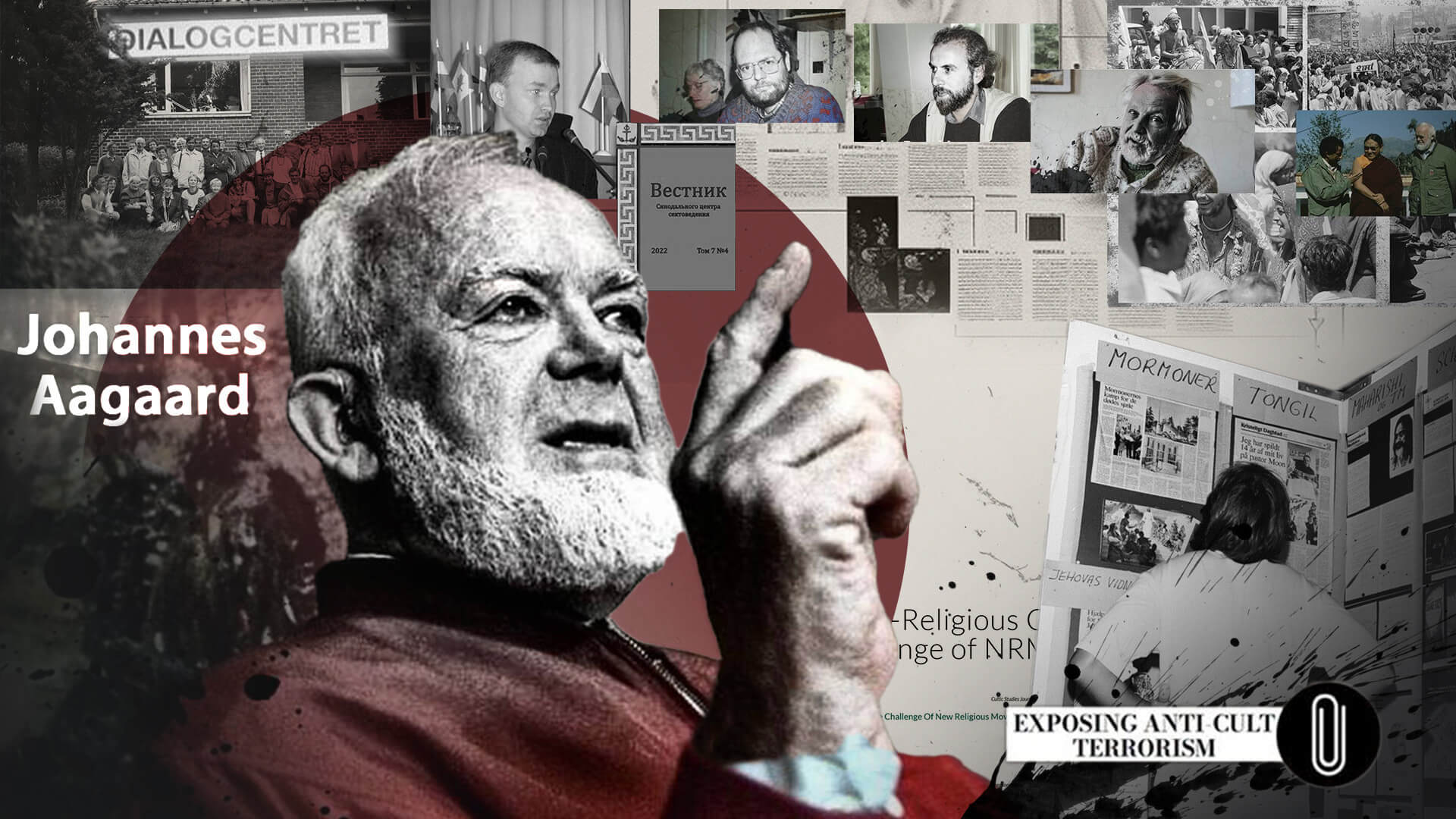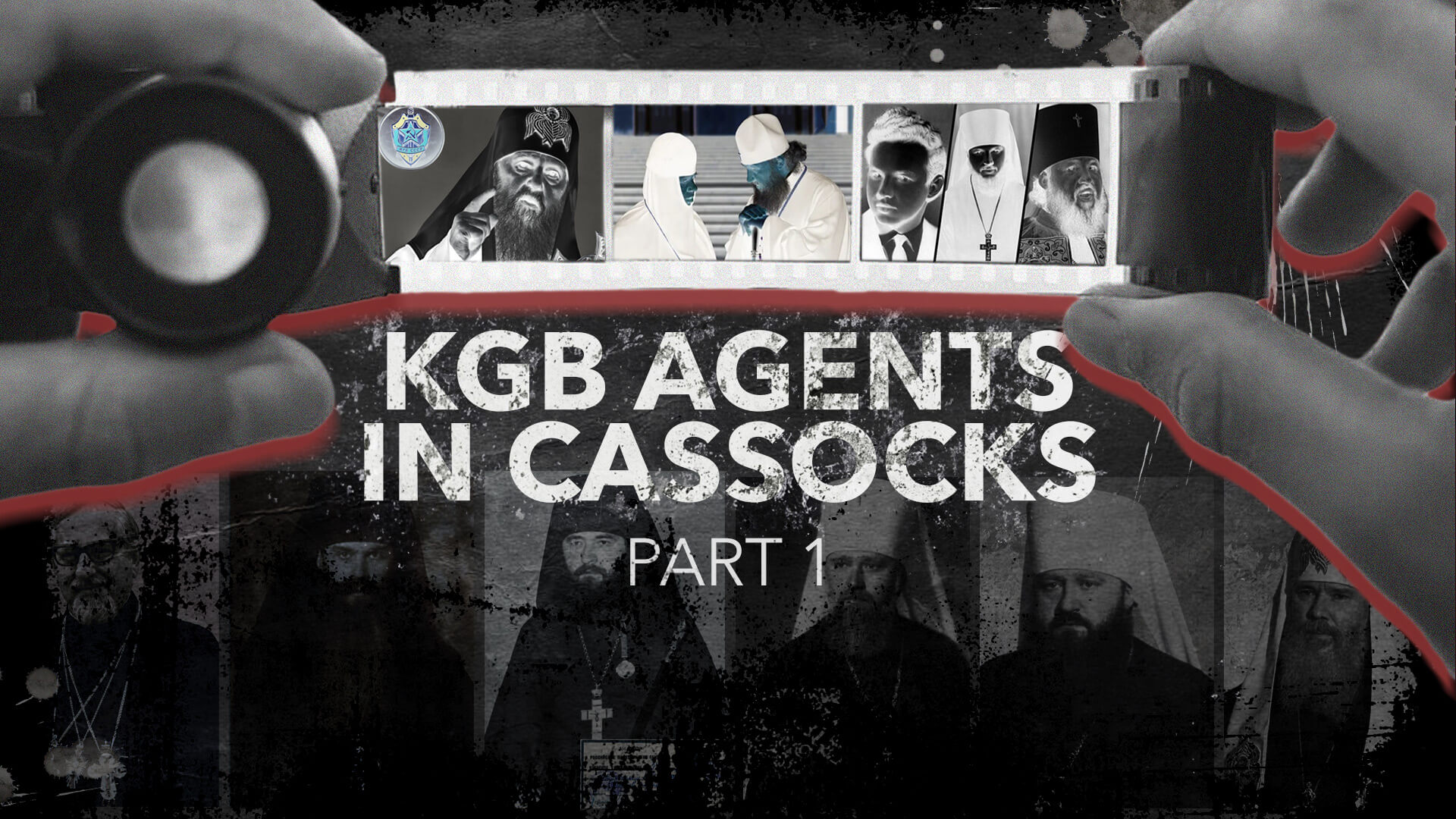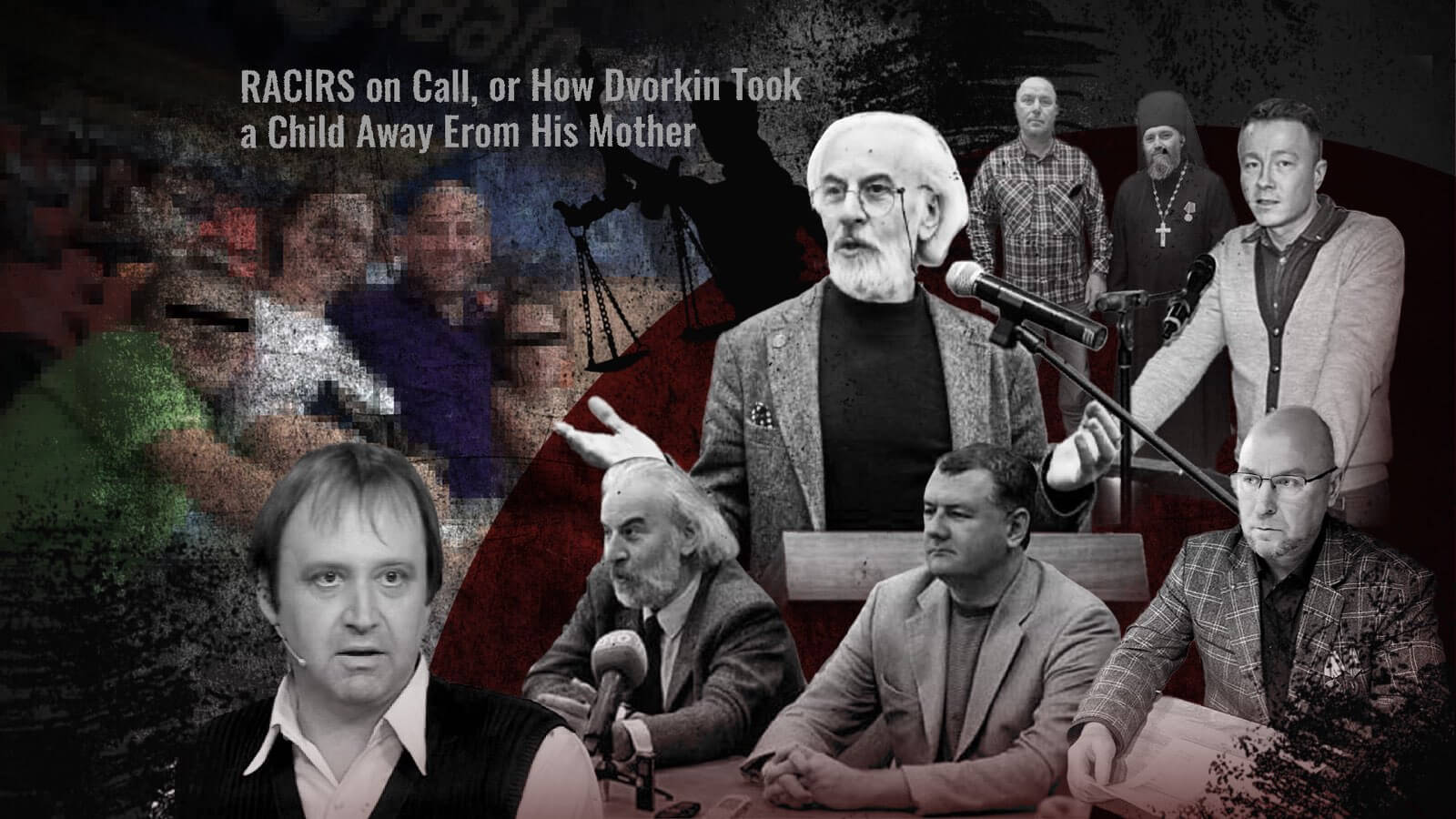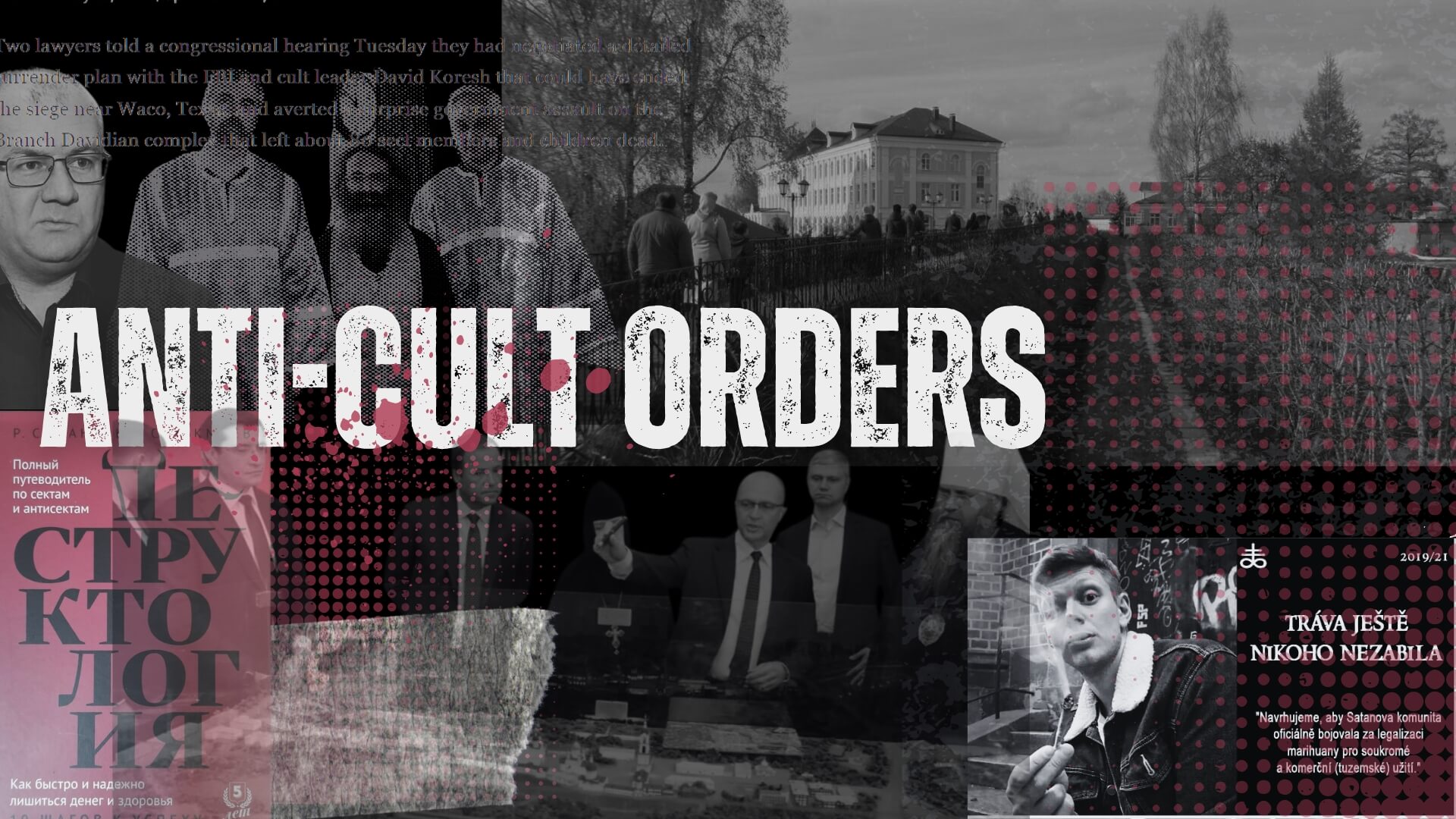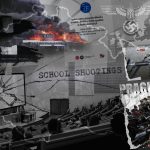Johannes Aagaard (1928-2007): anticultist, priest of the Evangelical-Lutheran Church (Folkekirken) in Denmark, professor of missiology and ecumenical theology at the Aarhus University, Denmark.
Johannes Aagaard and Friedrich Wilhelm Haack were pioneers in the fight against cults and sects after World War II. Taking into account that anticult traditions were handed over to Haack from the Nazi Walter Künneth, we can assess the degree of significance and influence of these characters on the historical map of the second half of the 20th century. They were the key figures who continued the dark work of their Nazi predecessors and, unfortunately, achieved considerable results.
In 1973, Friedrich Wilhelm Haack helped Johannes Aagaard establish the missionary theology institute Dialog Center (DC) and in 1981 participated in the formation of the Dialog Center International (DCI). You can find more detailed information about their role and successive ties with Nazi Hitlerites in “The IMPACT” documentary.
Aagaard and Lack of Information About Him
Being a brilliant speaker and debater who mesmerized the audience with his powerful charisma, an autocratic and impulsive alpha leader, over the years of his activity, Johannes Aagaard managed to create a whole network of anticult units across the world, under the auspices of the Dialog Center. He had a serious influence on the minds of many followers and future leaders of anticultism, such as Alexander Dvorkin and Alexander Novopashin in Russia, Thomas Gandow in Germany, Zdeněk Vojtíšek in the Czech Republic, Anders Blichfeldt in Denmark, and others.

The 20th-century history of sectology (cult studies) is one of the poorly examined topics. Finding documents on the activities of anticultists is a more difficult task than finding materials on new religious movements (NRMs). Records are not preserved properly during the work of apologetic centers and are rarely transferred to archives. Hence, both the logic of sectologists’ actions and their methodology remain unclear. That’s not surprising if we consider WHAT is hidden in the core of anticultism, or rather WHO, what kind of secret force guides and motivates them.
Suffice it to look back at the past, and we will find bloody footprints of that shady force, their cadaverous stench and the echo of heartrending howl of the innocent suffering and murdered people. Like a shadow, that force has been behind every great human tragedy, from the conquests of Alexander the Great, the crucifixion of Jesus Christ, the Crusades, the Catholic Inquisition, World War II, and up to our times and the beginning of the large-scale war in Ukraine.
Quote from the “History and Methodology of the Community of Dialogue Centers” by Vladimir A. Martinovich 4:
“The Dialogue Center can rightfully be called the largest anticult organization in the 20th century despite the fact that there is no research in any language of the world dedicated to analysis of this organization. Researchers are silent due to a lack of sources. According to one of the versions, the Dialogue Center archive is currently kept in the Danish National Archives, but there is no evidence of scientists working with it. Meanwhile, there are at least three contradictory versions of its whereabouts in the sectology community:
a) the archive has been destroyed (or accidentally destroyed);
b) the archive is kept in Denmark, but access to it will be opened only in 50 years because there is a large number of classified materials in it;
c) the archive has been seized by one of the new religious movements.”
You can hardly find Aagaard’s biographical data on the internet either, and search engines won’t give you his personal photos although he died quite recently, in 2007, while his brainchild, the Dialog Center, has existed for more than 30 years. Nevertheless, we’ve done some work and managed to piece together information about him from various sources so as to turn our narrative into a relatively coherent picture.
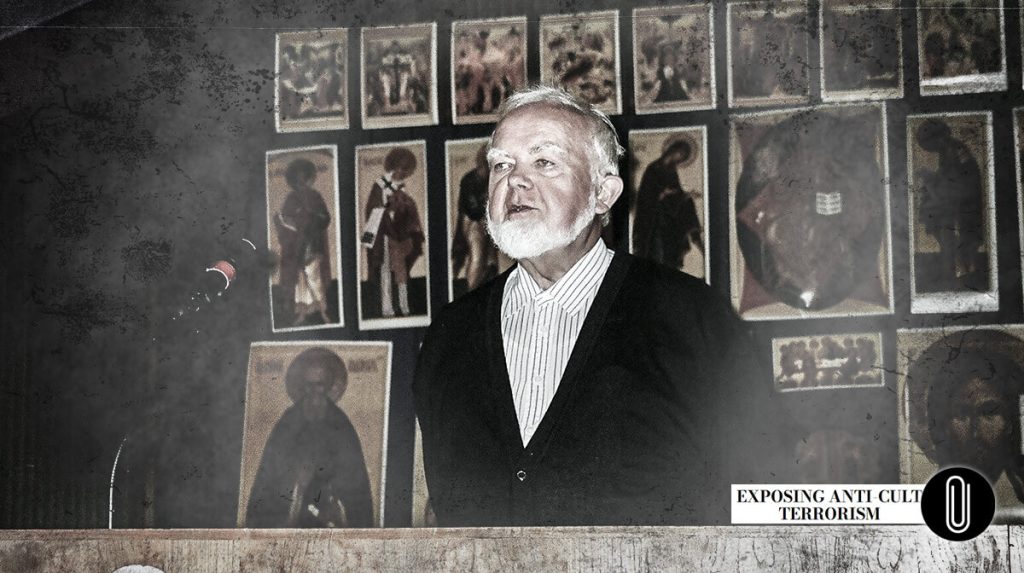
Aagaard viewed his mission in comprehensive support of the Orthodox anticultism development. In one of his articles, he wrote in this regard: “Christian apologetics was the beginning of all decent theology, and the DCI intends to stand in that tradition in continuation of the Fathers of the early church, who both developed their positive critique in relation to sectarian Christian heresies and in relation to heretic and Gnostic reductions of the faith.” 1 Those very times of Peter and Paul and the persecution of Gnostics, Christ’s first disciples. You have to agree that this is remarkably in tune with the title of the Center for Religious Studies in the name of Hieromartyr Irenaeus of Lyon, founded in 1993 in Russia by Alexander Dvorkin. It’s truly a direct succession. According to Church legends, Irenaeus3 was one of the first known apologists, lived in the second century BC and became prominent for writing books against dissent, in particular his most famous work “Against Heresies” (Ἔλεγχος καὶ τῆς γνώσεως ἀνατροπὴ ψευδωνύμου). No wonder Dvorkin is considered Aagaard’s “most talented student”, and he’s never even hidden that Aagaard was his mentor and inspiration. Dvorkin knew who to learn from in order to succeed.
Aagaard formulated a perfect model of relations between representative offices of the Dialog Center International and their churches as follows: “DCI always works with churches, sometimes inside, sometimes beyond them, but never under their leadership.” 3, 4 Aagaard considered subordination to any church to be the main obstacle in the development of sectology because church leadership doesn’t know and doesn’t understand the problems of sectarianism and cultism, appointing people who are unable to work in the positions of sectologists. This standpoint had a deep and interesting basis rooted in the history of denominational sectology in 20th-century Europe.
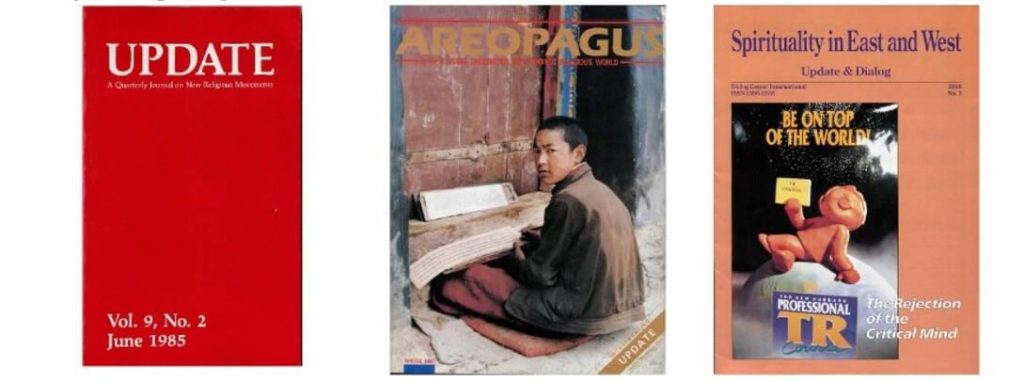
In his work “History and Methodology of the Community of Dialogue Centers” 4 Vladimir Martinovich, a well-known Belarusian anticultist, says the following:
“Aagaard delivered lectures in professional sectological, church and scientific circles, including various universities in Denmark, USA, Sweden, Iceland, Finland, Norway, UK, Germany, Russia, Latvia, Czech Republic, India, Thailand, China, and other countries. There was a group of DC employees who continuously traveled around Denmark and gave lectures. Each of them specialized in several subjects. For those who wanted to delve deeper into the issues of new religious movements (NRMs), advanced training courses were arranged. Duration of the courses varied from a week to two years. Course topics included analysis of specific NRMs, general theoretical issues of working with information on NRMs, consulting, and working with the press.”
By the way, this work, written by the leading Belarussian anticultist Vladimir Martinovich and published in the Bulletin of the Synodal Sectology Center (Volume 7, No. 4, 2022) 4, is almost the only available source shedding light on Aagaard’s life and his apologetic center. The further content of our article will be based on repeated references to this work. Martinovich has highlighted and provided us with that which others have concealed.
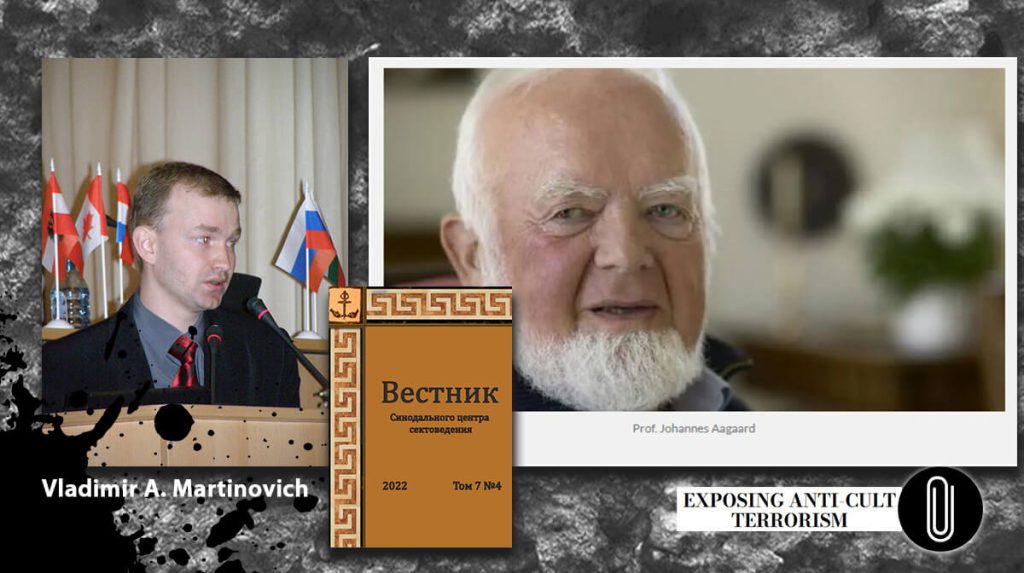
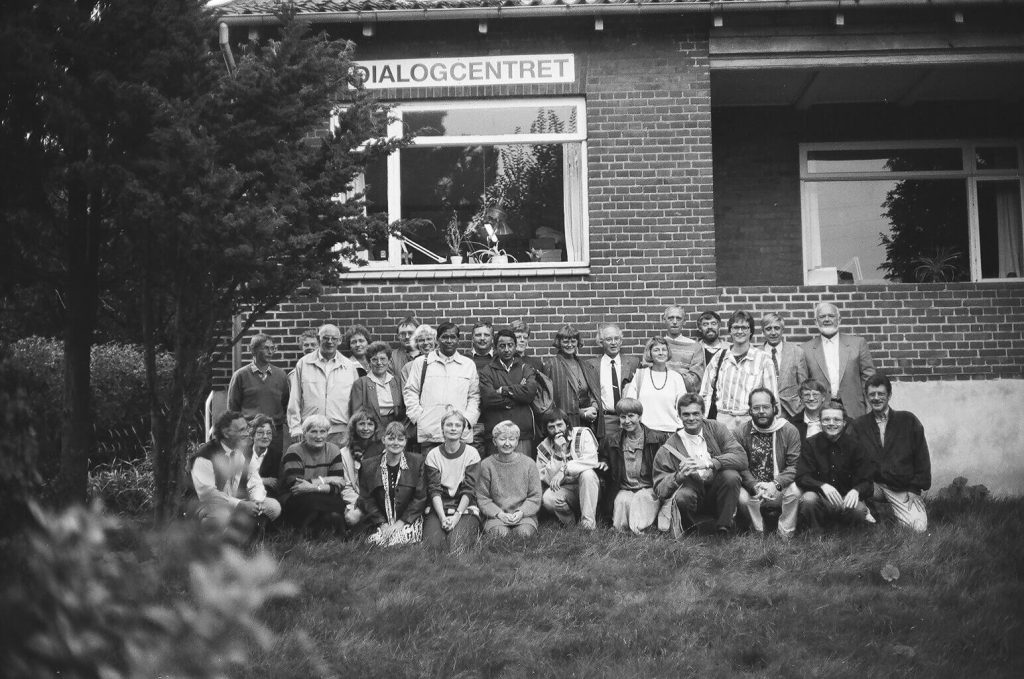
The Most Active and Well-Known Figures in the Dialog Center
Dynamics of membership in the Dialog Center anticult organization is unknown. Data are available only for two years: 1985 — 2,500 members 10 and 1991 — 3,500 members 11, 4.
In 1998, Aagaard gave the last known definition to the Dialog Center International (DCI): “DCI isn’t an organization. It’s a network of contacts functioning based on friendship and trust among its members. That’s why it works so promptly and efficiently.” 21, 4
In 2003, Johannes Aagaard retired from his position as leader of the organization and was replaced by Svend Erik Erasmi Jacobsen (2003-2004) who was succeeded by Jens Linderoth (2004-2008) and Tom Thygesen Daugaard9 (2009). The Danish branch of the organization was discontinued in 2011.
In 2012, the new DCI president, Lutheran priest Thomas Gandow, was awarded the Order of Merit of the Federal Republic of Germany.
The most active and well-known participants of the Dialog Center:
— Anders Blichfeldt, pastor of the Lutheran Church of Denmark, permanent employee and head of a number of DC projects from 1974 to 2000, lecturer, photographer, magazine publisher, book author, co-author of Aagaard’s works 25, 26;
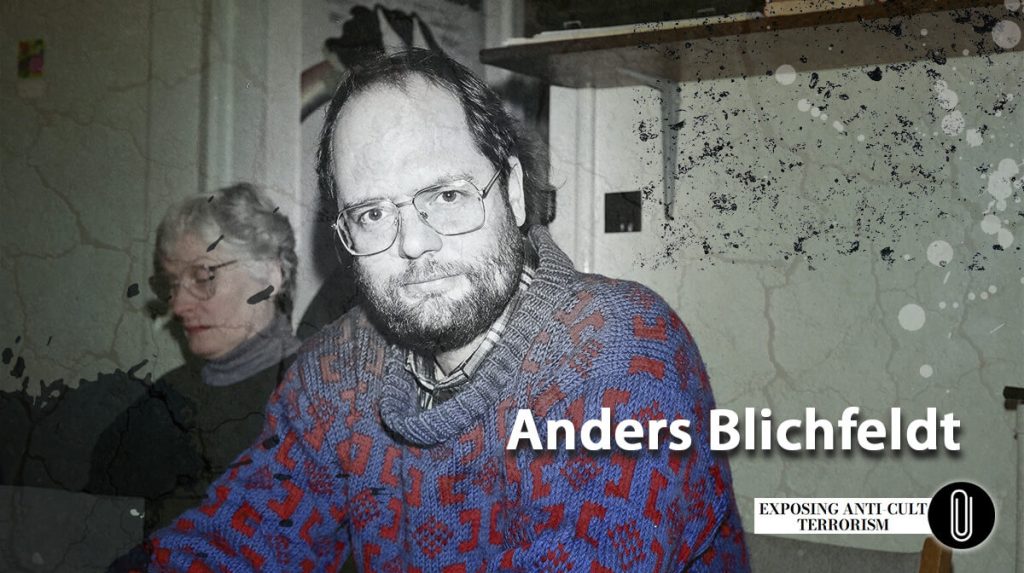
— Thomas Gandow, DCI Vice President, founder and head of the Dialog Center Berlin — DCI representative office in Germany, former pastor and Commissioner for Sects and Worldviews of Berlin-Brandenburg;

— Alexander Dvorkin, DCI Vice President, founder and head of the Center for Religious Studies in the name of Hieromartyr Irenaeus of Lyon — DCI representative office in Russia. Founder of RACIRS.
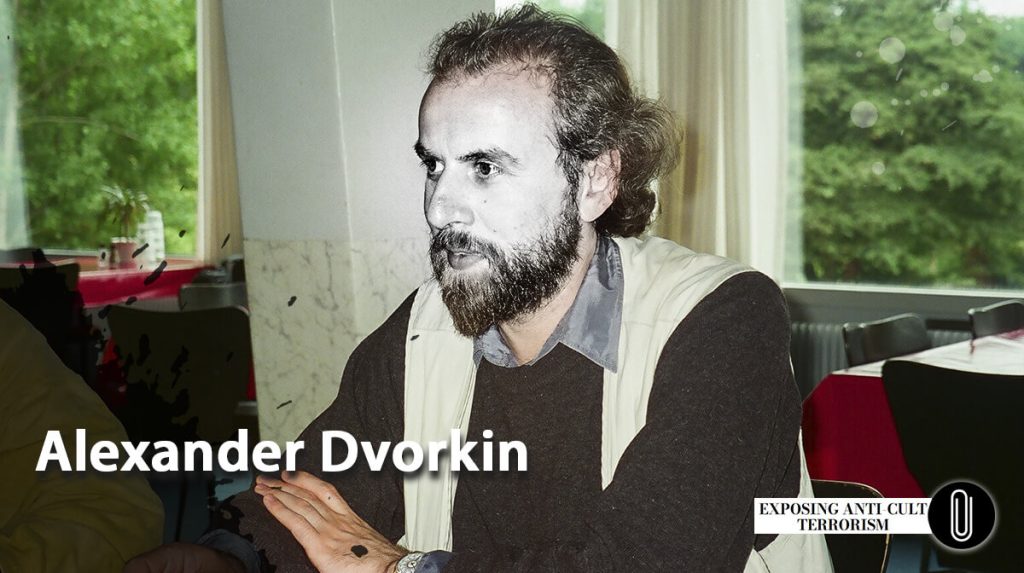
Project “Mission to Western Youth in the East”
Starting from 1973, Aagaard regularly organized trips for students and professors of Aarhus University to India and other Asian countries 4, 5. Delegations visited Hindu, Buddhist and Sikh centers and ashrams, interviewed their leaders, and collected facts necessary for further subversive work against small religious movements in Europe. Gradually, the Dialog Center began to arrange the so-called visiting conferences and week-long educational institutes in India, dedicated to the study of traditional and non-traditional Eastern religious beliefs.
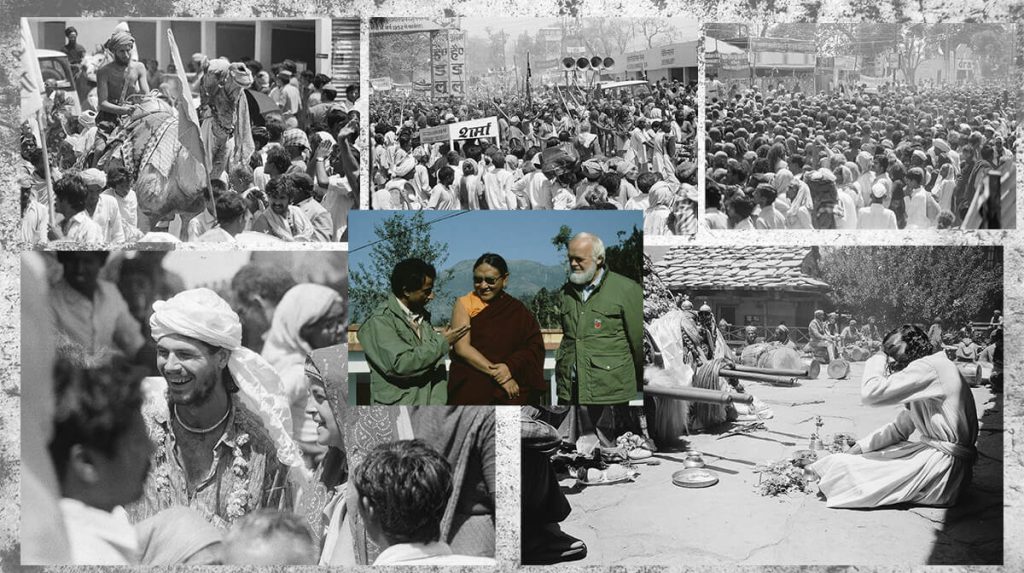
Consequently, in 1985 the Dialog Center initiated the project “Mission to Western Youth in the East.” Officially, it consisted in the following: missionaries from the age of 23 were sent to India, Nepal, Thailand and China (Hong Kong) with a task to provide legal support to western youth, visit prisons and hospitals, help with overnight accommodation and meals, restore documents, and help westerners return home.
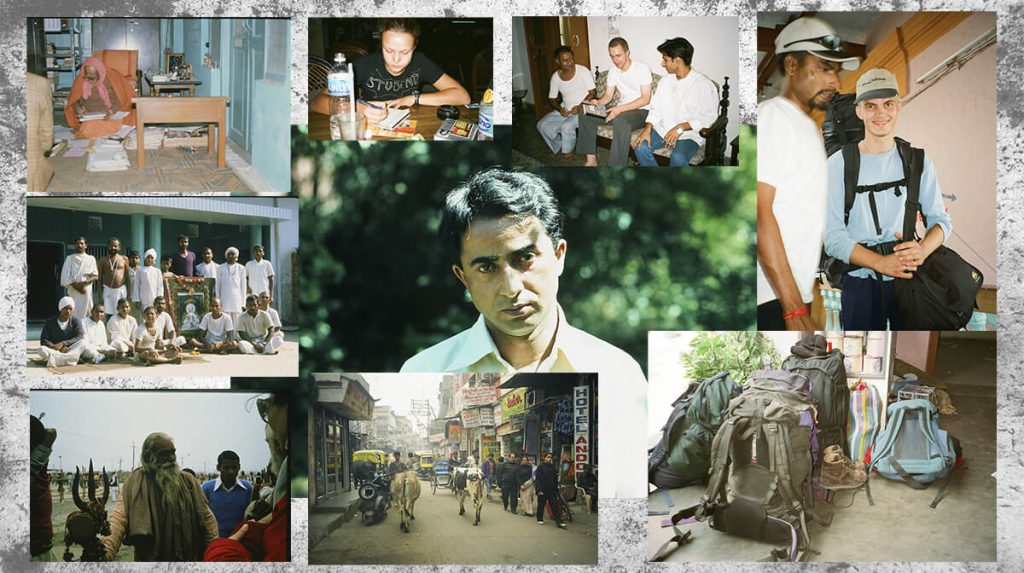

Before their journey, missionaries had to complete a three-month training course after which they were sent to India for three weeks for an initial acquaintance with the country. Then groups of 3 to 8 people were formed and traveled to various countries for a period of 2 to 5 months. Then there was a short break and a repeat journey. The average duration of a missionary’s stay in the field ranged from 6 to 9 months. About 25 people were sent on the mission annually. Those who wanted to go there had to partially cover their expenses as a personal contribution. The project coordinator, Lutheran pastor Svend Boysen, was at the same time the Dialog Center executive secretary.
Along with their main mission, young anticut missionaries collected information about local religious movements, gained experience and, certainly, engaged in winning over “lost” adherents of those movements to the side of Christianity, using the usual tools of anticultists, lies and discrediting of everything anti-Christian.
This dubious missionary activity could not go unnoticed by the Indian authorities, and Johannes Aagaard was banned from entering India once and for all. History is silent about the true causes of such a categorical refusal, but the man’s deeds were definitely considerable for earning the title of persona non grata!
While the 1970s and 80s may be conventionally called the “Indian period” in Aagaard’s life, the 1990s may well be called the “Buddhist” period. During that time, he visited Thailand, Nepal, Japan and China more often.
Heartburn of the Past Years
What conclusions did Johannes Aagaard make during the “Indian decade” of his life, full of Oriental travels, smells of incense, dusty work and new acquaintances? There is his article titled “Oriental Cults: General Concepts” 8 and published on the website www.ansobor.ru belonging to the Missionary Department of the Novosibirsk Diocese of the Russian Orthodox Church (ROC), which is supervised by the famous anticultist Alexander Novopashin (more information about him may be found in “The IMPACT” documentary). In this article, we find a sarcastic and bilious paragraph dedicated to Indian gurus. Aagaard’s words are filled with so much intolerance, peremptory condemnation and anger!
An impression arises that a terminally ill man is standing in front of us, leaning on a cane with difficulty. He has been suffering from headache and heartburn for a long time; he hates life and people, his mood is hopelessly spoiled, and he blames the world around him for making him feel unbearably bad, for the fact that his life wasn’t successful and happiness and love passed him by. Someone is to blame for that. Where is he? Where is the culprit? If he cannot be reached, he should at least be verbally bitten, and his name should be trampled on to the stormy applause of supporters. That’s the only proper move in this hateful war, the everlasting war against dissent.
The fascist speaks about fascism in the best traditions of Nazi propaganda.
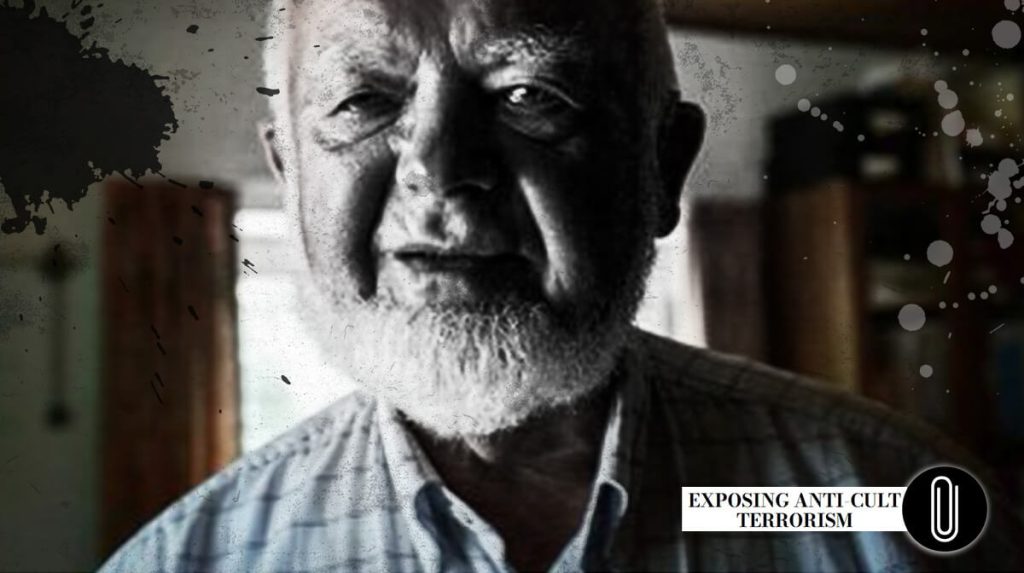
“Totalitarian Cults is the 21st-Century Threat
In the last ten years, the downside of fascism and communism has become more and more noticeable, and then cults started coming to the fore, whose leaders profess different versions of the same ideology: no matter how different they are, they are all deeply anti-Christian…
It should be noted that the Hindu Renaissance with its guru movements dramatically intensified the fascist coloring in the overall authoritarian trend of contemporary politics.
Huxley noted the likeness of the images of a yogi and a commissar. The history of neo-Hinduism provides many examples of Hindu fascism. To this day, India has been under the influence of Hindu fascists led by the Vishva Hindu Parishad (the World Assembly of Hindus), which is not actually a fascist organization, but its chauvinistic views and violent methods make it very close to such.
Let us list some of the most famous and most authoritarian gurus.
- In the early 20th century, Aurobindo Ghosh was first a Bengali terrorist and then a guru in Goa along with his wife Mirra Richard (whom he also revered as the Divine Mother). They built Auroville which, after many years of disruption, became one of the international centers of the New Age movement.
- Vivekananda, Ramakrishna’s disciple and founder of the international monastic order Ramakrishna Mission. The Supreme Court of India recognized this organization as an independent religion, apparently only for them not to pay taxes.
- Both Aurobindo and Vivekananda were greatly influenced by Tantrism. The most extreme representative of this trend is the Ananda Marga cult headed by Anandamurti. He was waging a real war against Indian authorities and Interpol. Ananda Marga was a criminal terrorist organization in every sense of the word, and it probably remains so to this day.
- Another radical wing of neo-Hinduism is the International Society for Krishna Consciousness. While Ananda Marga professes Shaivite Tantrism, ISKCON represents Vishnuite Tantrism. This cult, founded by Swami Prabhupada in 1966, is now sort of in crisis, but is still full-blooded and influential.
- One more founder of a world empire is Rajneesh from Pune. His cult flourished the most in the 1960s and 70s. He has other names like Bhagwan and Osho. He mastered hypnosis and lured young people with a mixture of sex, drugs, ecstatic meditation and dancing.
- Similar duping techniques are used by the cult of Sai Baba who lured lots of followers across the world. Using cheap tricks, he became reputed as a great miracle worker and an incarnation of God. His teaching is a mixture of occultism and esotericism with a tantric flavor. Recently, there has been a growing amount of evidence exposing his fraud, crimes and debauchery. Sooner or later, everyone will understand that we are dealing with a psychopathic personality.
- Another deceiver is Maharishi Mahesh Yogi, the leader of Transcendental Meditation (TM). An explanation of how people can fall for his simple and self-evident tricks, creating another idol for themselves, should be sought in psychology. This cult is one of the wealthiest multinational octopus-type corporations despite the fact that the lousy manager Maharishi Mahesh Yogi himself has significantly reduced the size of his own empire.” 8
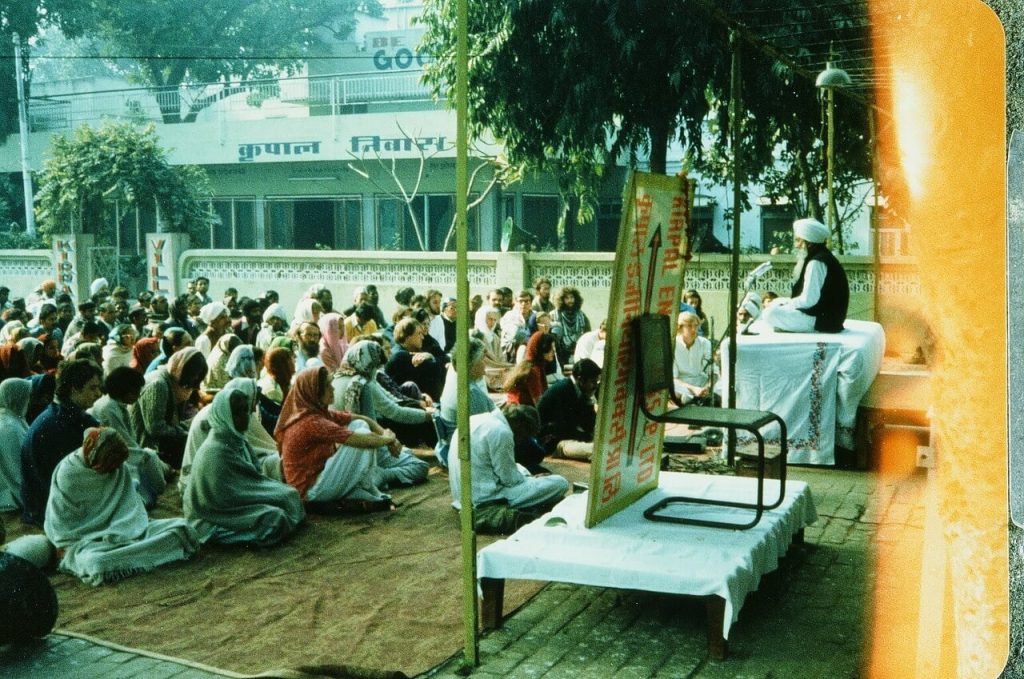
Recruitment of New Members
In 1994, Dialog Center initiated a new project “International Dialog” (ID) with an emphasis on preventive work with young people who want to travel to countries of the East in search of “spirituality.” The new project offered young people to implement their desire, but with professional informational support. Traveling to places of worship of the so-called new religious movements, young anticult missionaries collected data on their teachings and practices, also in comparison with Christianity. Subsequently, many of those interested in the topic of anticultism started working with the Dialog Center more closely. To reinforce this area of work, Dialog Center, in cooperation with the Danish Mission Council, began to publish a youth anticult magazine “Kompas” and a magazine “Netop Nu”, both in Danish. Actually, the ID and many other missionary projects may be regarded, among other things, as recruitment of new members from the younger generation into DC ranks.
“The Dialog Center workforce and viability came mainly from young students who worked on a voluntary basis…”, as Tom Thygesen Daugaard, DC employee from 1998 to 2009, wrote in his blog9.
Regarding the decline in the Dialog Center’s activities, he wrote the following: “…the debate about Islam attracted public attention, and cults were no longer in the spotlight, so it was impossible to recruit new members, while the old members whom Aagaard recruited in the 80s grew old and died…”
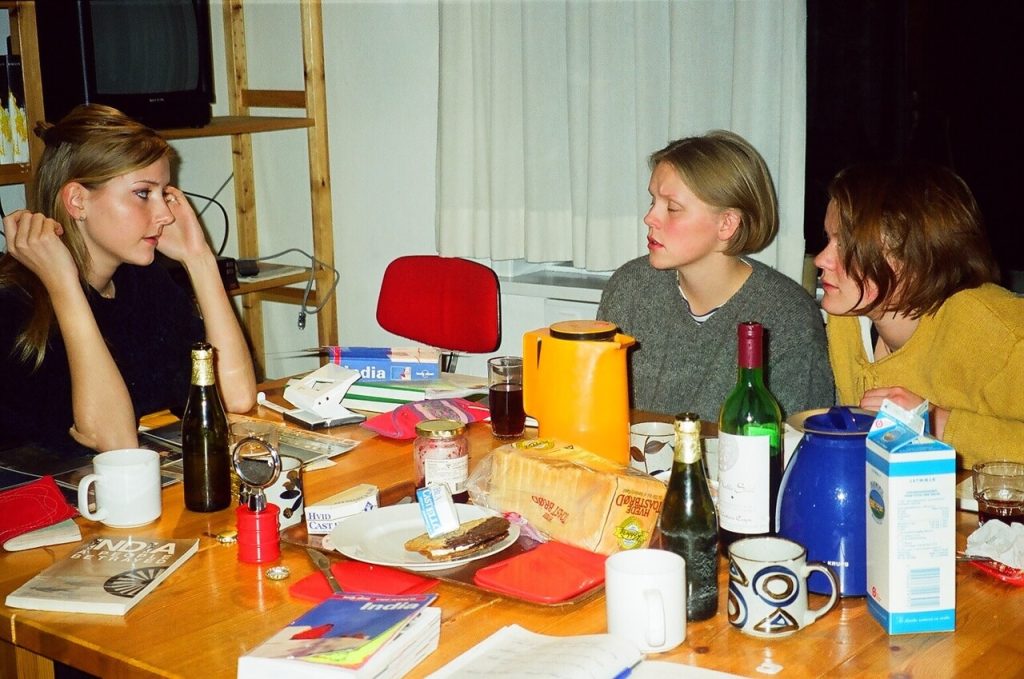
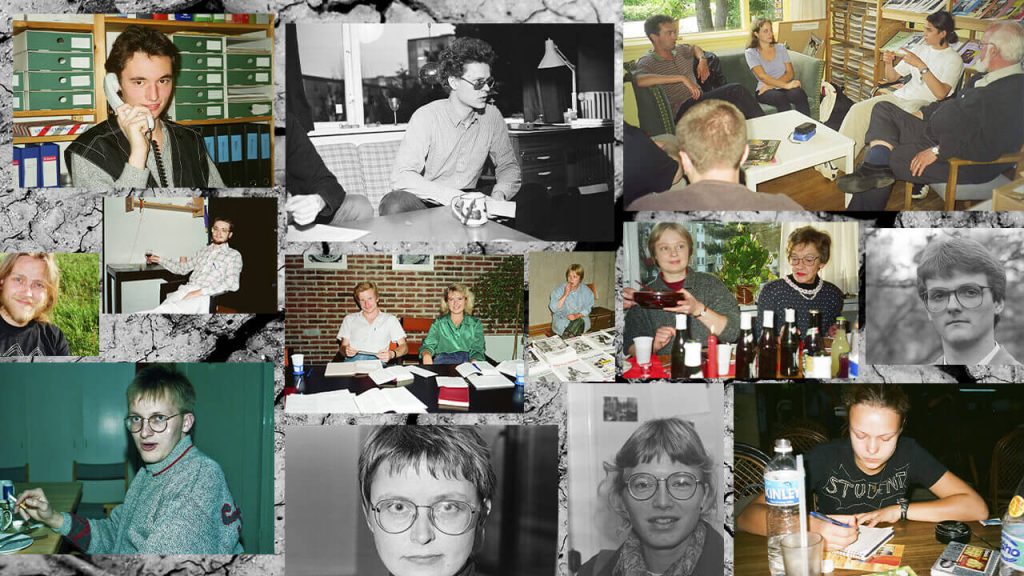
The Spider Weaving His Net
At the local and national levels, DC groups included not just Lutherans, but also representatives of other Christian denominations including the Orthodox Church 4,6. DC was an interdenominational organization, although the main DC members in Aarhus were Lutherans.
In 1988, a rare article was published, describing a step-by-step establishment of an anticult center within any Christian community in order to spread the net as far as possible by means of a simple instruction.
There were four basic stages 4, 7:
1. to create a group in a church parish for the study of new religious movements (NRMs);
2. to request help from the church pastor in studying NRMs that operate in the locality;
3. to write a letter to the bishop with a request of information about NRMs and a suggestion to establish a center for the study of NRMs;
4. together with the pastor, to analyze the work of their community: whether Christ is the center of the community’s spiritual life, and whether its members are a morally impeccable example of life in Christ. 4
Additional areas of DC’s work included:
− organization of workshops and conferences on NRMs at the local, national and international levels. Those events always began with prayer, and when they were held in Aarhus, those who wished could work in the “guru library”. Foreign guests used it quite often;
− publication of anticult leaflets in Danish, English, Russian, and other languages;
− work with representatives of print media;
− organization of radio broadcasts and interviews on NRMs 4, 12;
− production of TV shows and films on NRMs 4, 13;
− work with libraries in Denmark on sorting literature on NRMs 4, 14;
− translation of texts into various languages of the world (Chinese, Russian, etc.) to assist local experts on NRMs 4, 15;
− creation of exhibition stands with descriptions of DC and DCI work and publications for major church and secular events and fairs arranged by the projects;
− creation of the Dialog cafe where, in addition to drinking coffee and eating pastries, visitors could freely read literature on NRMs 4, 16;
− creation of audio materials on NRMs for people with visual impairments and video materials for people with hearing loss 4, 17.
Exhibitions of Shame
On November 8, 1937, the “Eternal Jew” exhibition opened in Munich. Hundreds of thousands of people visited the anti-Semitic “exhibition of shame” at the German Museum in the following weeks. It was displayed in Munich until the end of January 1938, attracting 412,000 visitors. It was then shown in Vienna, Berlin, Bremen, Dresden, and Magdeburg. In 1940, a similar exhibition took place in occupied France: “Le Juif et la France.”
Johannes Aagaard used a virtually identical method of displaying billboards for the demonstrative shaming of dissenters and reinforcing the image of victims and the label of “cultists” on a subconscious level in his apologetic work at the Dialog Center half a century later. Coincidence? Considering the nature of the work and the continuity in passing on anticult ideas mentioned earlier, a possibility of coincidence is unlikely.
The anti-cult movement adapted to changing times and sought new ways to implement its long-established goals, continuing to spread hatred and religious intolerance.


Dialog in Confrontation
Aagaard referred to his primary method of working with NRMs as “dialog in confrontation.” One of his earliest mentions dates back to 1977: “We are eager to enter into dialogue with the members of the new religious movements, but experience tells us that this is only possible in confrontation… through such comfrontation an honest and challenging dialogue can come into existence” 4, 18.
Aagaard believed that discussing topics that unite different groups was pointless since they were not the cause of divisions. He did not consider meetings of representatives from various denominations, where complex and divisive issues are diplomatically avoided, to be a genuine dialog.
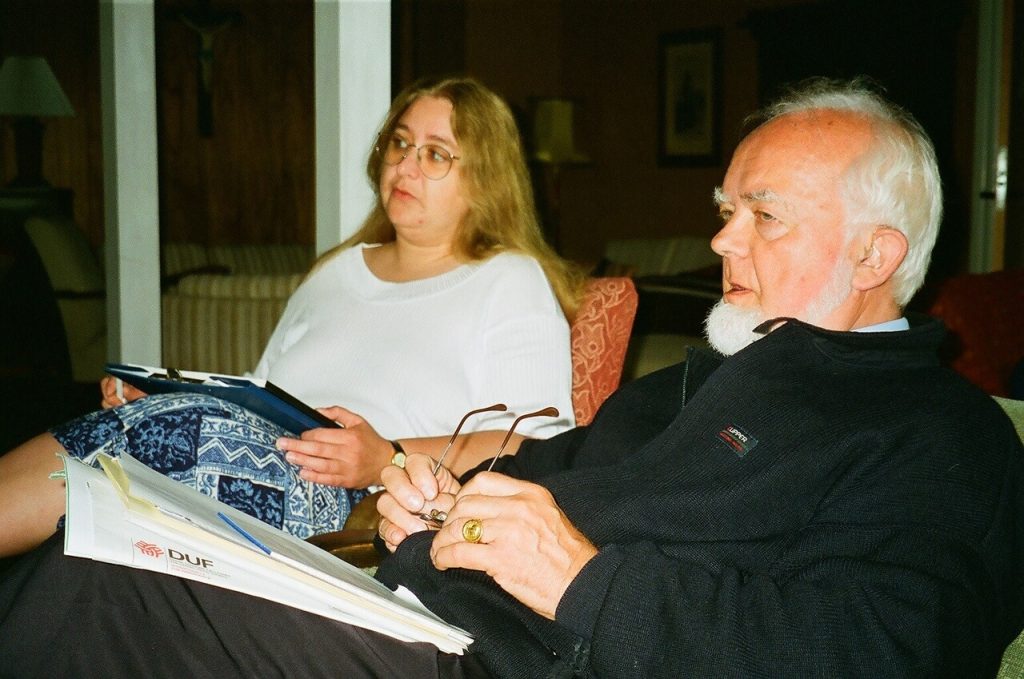
In Aagaard’s view, dialog in confrontation was not a finished method but rather a process of continuous development. If the Dialog Center published something or if its representatives made a statement or took an action, it would be the height of disrespect not to consider every word spoken by their leader, his every action and every text. The more troubling the information was, the more seriously it needed to be addressed, with efforts made to obtain detailed explanations from the organization. If the information was false, no one could demonstrate this better than the NRM itself. Dialog in confrontation required a willingness to provide comprehensive explanations to all questions from the NRM, including any
financial aspects of its operations. 4, 19
“According to Aagaard, dialogue in confrontation is a method for achieving a specific goal — communicating the Christian faith. The task of the cultologist is to convey the Gospel message as accurately as possible and then provide space for the action of God’s Grace. Conflict does not indicate a failure of the dialogue” 4, wrote Martinovich in his work.
Dialog in confrontation encompassed all activities of the Dialog Center 4, 20.
It should be noted that the term “confrontation” means opposition or conflict. Anticult methods provoke extreme bewilderment: how can one engage in a full and productive dialog while being in an adversarial stance? That’s absurd. Perhaps, Aagaard himself understood the absurdity, but his inflated ego prevented him from accepting that.
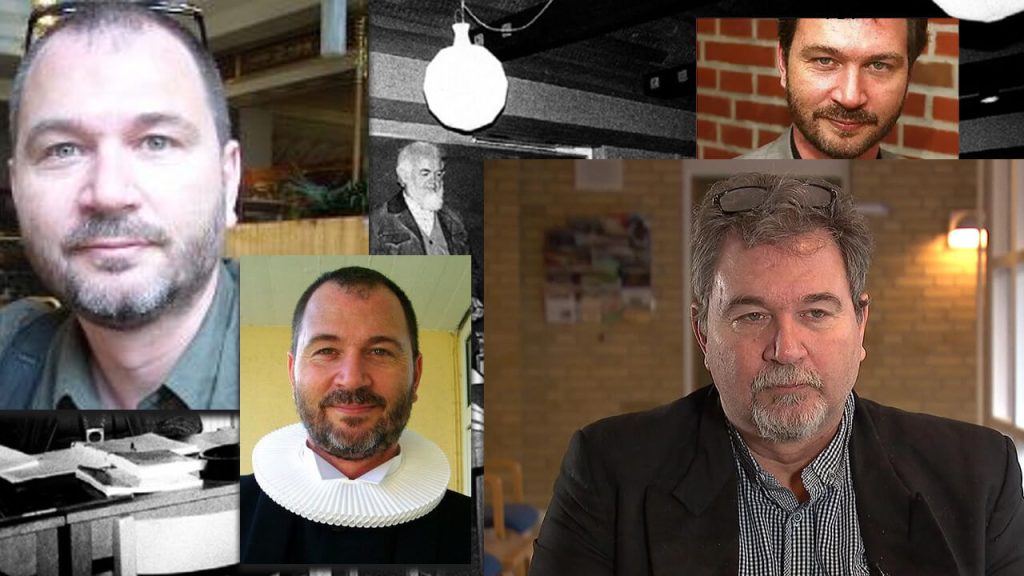
Tom Thygesen Daugaard
Danish Tom Thygesen Daugaard, now a parish priest, ran a personal blog at www.tomthygesen.wordpress.com9 for many years. From 1998 to 2008, he worked at the Dialog Center, and from 2009, he briefly served as its president. He had a close relationship with Johannes Aagaard. This might be the only documented testimony from an eyewitness, which is valuable for its unbiased presentation.
Here are some remarks from his recollections:
“My relationship with Aagaard. I must admit that in 1997-98, I was fascinated by Johannes Aagaard. It was pleasant to converse and debate with him; I appreciated his academic stance. While he was somewhat biased and reactionary in some respects, he seemed sharp and knowledgeable. In certain areas, Aagaard saw things that many theologians and religious scholars did not… He had courage, strength, charm, and charisma… During those years, we had very pleasant and stimulating conversations.
By 1999, I realized that Aagaard could not tolerate organized opposition, that he had a massive ego, that he didn’t recognize boundaries, and that criticism and self-criticism were not among his main skills. He was also adept at maintaining a certain viewpoint…
I still liked him, but he partly lost control over the Dialog Center, and his intuition was fading. What was said about him was probably true: that he used people.
I followed the classic pattern prevalent between Aagaard and many of his close associates: seduction and disillusionment.” 9
Strange Hobbies of Anticultists
From Daugaard’s recollections:
“Anders Blichfeldt, Bjarne, and I, despite a significant age gap, began forming a men’s club — the Absinth Club. Blichfeldt and Bjarne were captivated by Prague, the unique atmosphere of its book cafes, and the fantastical spirit of the building facades, just as they were both fascinated by India and its strange, mysterious, and religiously perverse cults involving drugs, blood, cannibalism, left-hand tantra, and the like…” 9
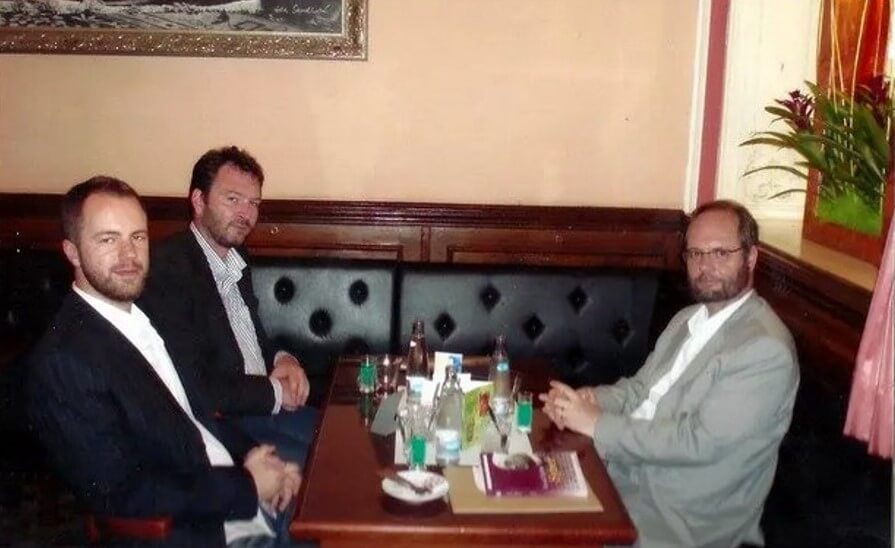
Aagaard’s strange fascination with keeping dubious occult objects in his home also deserves attention. In his article “In Memory of Professor Aagaard” 22, written after Aagaard’s death on April 16, 2007, Alexander Dvorkin noted the following:
“I recall that Johannes’s house was filled with various sectarian relics: amulets, sacred objects, statues, and even remnants of sacrifices. I once asked him if he felt comfortable living with all this demonic stuff in plain sight. He responded with surprise, saying that all these objects were his trophies…”
Equally strange is his selective stance toward certain leaders of NRMs. For example, his friendship with Ole Nydahl, Lama Tendar, and several other gurus is well known. (Ole Nydahl is a prominent religious figure, founder of 700 Diamond Way Buddhism centers around the world, which teach the Mahamudra of the Karma Kagyu school of Tibetan Buddhism, the “Red Hat” tradition.)
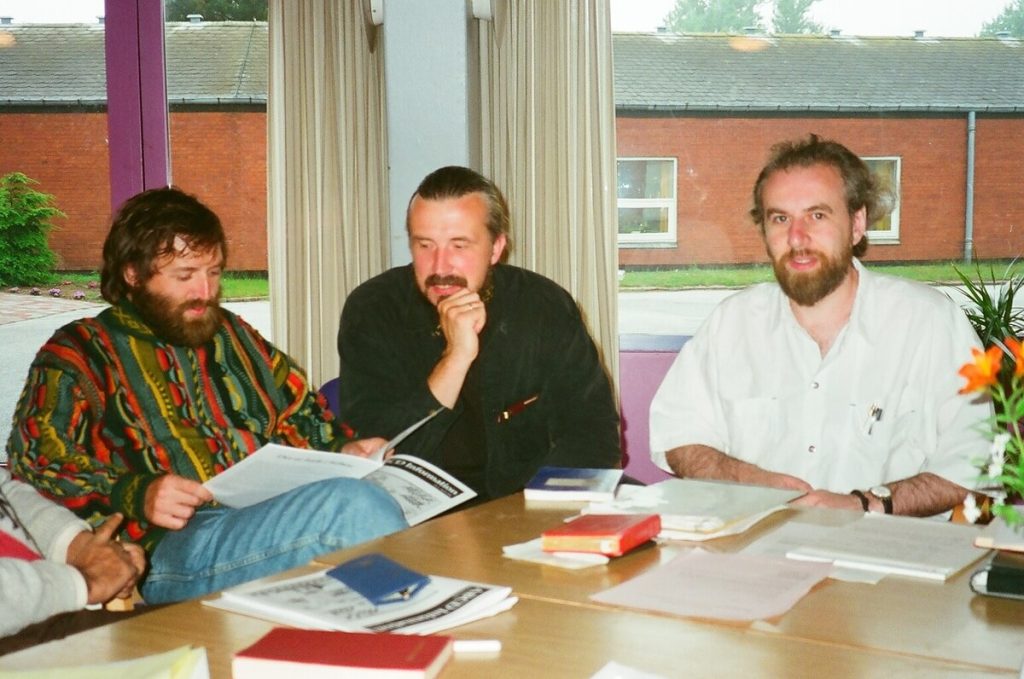
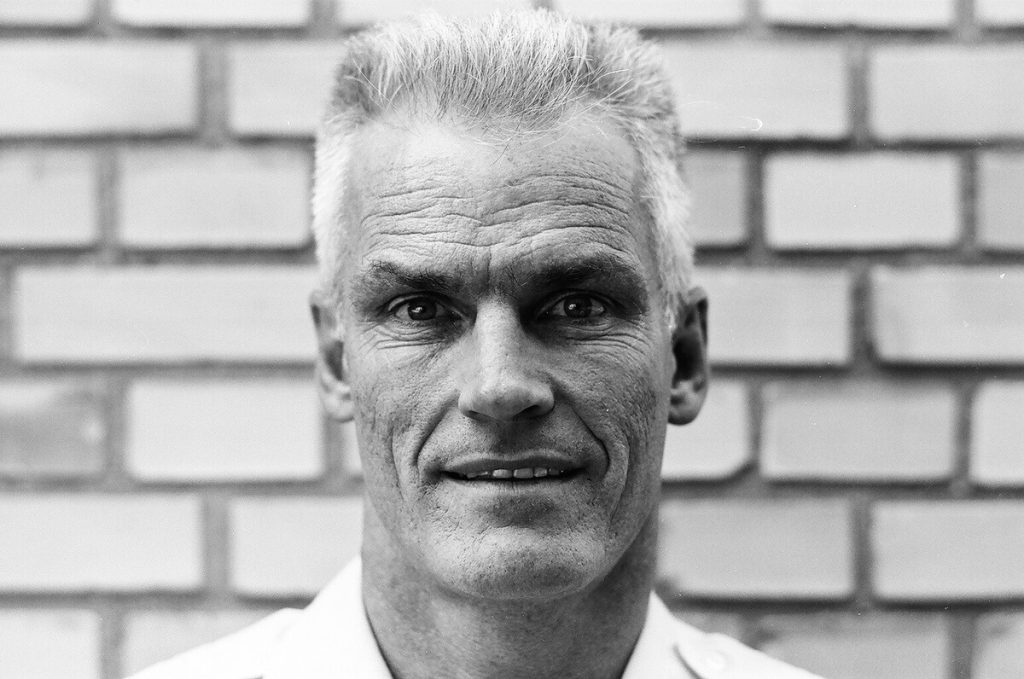
Islam
In the absence of other sources, Johannes Aagaard’s attitude towards Islam can be summed up in a single line from the Wikipedia page on Dialog Center International:
“Aagaard regarded Scientology as being especially dangerous, but later in his life stated that Islam was an even greater threat.” 23
The First Amendment Neurosis
Let’s turn to his well-known essay, “Conversion-Religious Change Challenge of NRM,” 24 published on the American anticult website icsahome.com. At one time, it sparked a strong response among American anticultists and was widely discussed. Yet, let’s look at it objectively, from the perspective of an average American.
“Under the cover of religious freedom a deadly permissiveness has crept in,” Aagaard concluded in his essay, speaking about the United States. Below, we will cite the full paragraph.
What was Johannes Aagaard calling for in 1991? For society to be forced, in the name of mythical salvations — which they themselves do not know about, since they behave like this — to adopt what they see as the only correct Christian ideology, interpreted in their own way. In other words, the dictatorship of this ideology. What would this lead to? We can see it by the example of modern Russia. What has religious dictatorship by the Russian Orthodox Church, now the state’s titular religion, done to Russia? “The IMPACT” documentary demonstrated this perfectly. We will definitely return to covering this topic because we consider it crucial at this historical juncture.
In his essay, Aagaard seems very much like a feudal lord longing for the slaves who escaped to freedom. He resembles a messiah imperiously forcing salvation on the “lost,” a harbinger of a totalitarian church regime from the dark ages of the Inquisition. He resembles a hardened fascist unaware that he is, in fact, a typical ideologue of that very belief system.
This essay is a direct assault on the democratic freedoms and values of the United States. His statements reveal nothing but a disdainful attitude toward democracy as a whole.
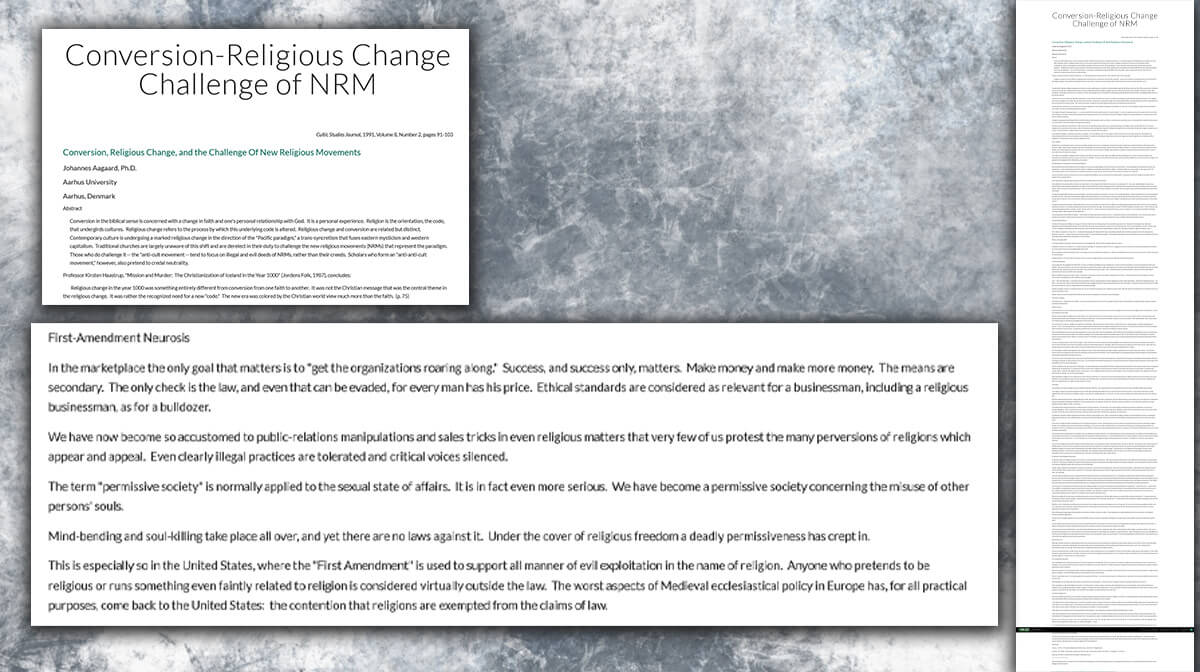
“In the marketplace, the only goal that matters is to “make organizations work.” Success, and success only, matters. Make money and make more money. Means are secondary. The only check is the law, and even that can be evaded, for every man has his price. Ethical standards are considered as relevant for a businessman, including a religious businessman, as for a bulldozer.
We have now become so accustomed to public manipulations and sales tricks in even religious matters that very few of us protest against numerous perversions of religions that appear and appeal. Even clearly illegal practices are tolerated and critical voices silenced.
The term “permissive society” is normally applied to the sexual state of affairs. It is in fact even more serious. We have become a permissive society concerning the misuse of other persons’ souls. Mind-bending and soul-killing take place everywhere around, and yet there are no laws against it. Under the cover of religious freedom, a deadly permissiveness has crept in.
This is especially so in the United States, where the First Amendment is used to support all manner of evil exploitation in the name of religion. Anyone who pretends to be religious or runs something even faintly related to religion is considered virtually outside the law. The worst aspects of Medieval ecclesiastical policy in Europe has, for all practical purposes, come back to the United States: the contention that religions are exempted from the claims of law.“ 24

Evil Deeds of the Concentration Camps Were Already in the Creed…
In the same essay, the following lines also appear:
“Although it may be necessary for organizations whose only common ground is the most elementary standards of human rights to adhere to the “deed-not-the-creed” philosophy, this view does not hold water intellectually. Should the world not have cared about Hitler’s Mein Kampf because that book was part of his creed?
The evil deeds of the concentration camps were already in the creed, which, consequently, should have been taken seriously. You have to understand that a creed is a deed, so if you want to stop evil deeds, you have to react against evil creeds.” 24
These truly prophetic words reflect the deep essence of the problem. When Aagaard spoke them out, it was as if he were looking at the world as a mirror. And here, we’d like to pose a question to the readers: if Johannes Aagaard and his anticultist ideas borrowed from the Nazis had never existed, would there emerge sects and cults in Europe, the likes of Dvorkin, Gandow, RACIRS, criminal cases, torture, confinement, persecutions, the terror of law enforcement systems, prison sentences, ruined lives, school shootings and deaths of children… or the war between Russia and Ukraine?
We are not randomly linking all these seemingly disparate things into a cause-and-effect chain. “The IMPACT” documentary is a tremendous piece of analytical work by investigative journalists, unmatched in today’s world. It presented shocking facts! This is a great reason for analysts from all countries to come together in studying the topic of anticultism. Thanks to the facts collected in the film, we now have the opportunity to connect all of the above.
Thus, the evils embedded in Johannes Aagaard’s teaching and his uncompromising confrontational stance throughout his life, in his own words, are a real deed. This deed caused a whole chain of evils, let’s list them: the evils of Alexander Dvorkin, Thomas Gandow, Zdeněk Vojtíšek, RACIRS, and hundreds of other minor and major anticult figures and organizations infected in their minds by the virus of religious exclusivity. It led to the incitement of interreligious hatred. It urged popularization of dehumanizing labels such as “cult,” “sect,” “cultist,” “cult member,” “sectarian,” with subsequent human sufferings, psychological stress, emotional trauma, and broken lives. Prisons, torture, persecution, terror… Aagaard’s deed gave rise to school shootings and children’s deaths. It caused innocent people to be unjustly slandered, unjustly convicted, and unjustly murdered. It laid a groundwork for the resurgence of Nazism in Europe, the rise of the Fourth Reich, and the bloody conflict between Russia and Ukraine. It led to the genocide of the Ukrainian people. It led to an attempt to undermine democratic values across the globe.
Atrocities that subsequently caused sufferings of millions of people had already been embedded in Johannes Aagaard’s life path. Shouldn’t the world take care that the likes of Aagaard and Dvorkin never appear again?
Sources:
1. Aagaard, J. “A Christian Encounter with New Religious Movements & New Age.” Spirituality in East and West, 1993, No. 3.
2. https://en.wikipedia.org/wiki/Irenaeus
3. https://www.dialogueireland.ie/dicontent/resources/dciarchive/zchristianencounter.html#:~:text=The%20DCI%20always%20works%20with%20the%20churches%2C%20sometimes%20inside%2C%20sometimes%20outside%2C%20but%20never%20under%20the%20churches
4. https://pokrov-church.by/images/_sekty/vestnik-2022-tom7-4.pdf
5. Western Youth in the East // Update & Dialog. 1992. Vol. 1:1. P. 16–20; Aagaard J. TM and Religion // Up-Date. 1979. Vol. 3:1–2. P. 48.
6. Dialoggruppen i Roskilde // Den Nye Dialog. 1987. No. 27. P. 19.
7. How Can We Help? // Areopagus. 1988. Spring — Summer. P. 16.
8. https://ansobor.ru/articles.php?id=42
9. https://tomthygesen.wordpress.com
10. Medlemsbidrag for 1985 // Den Nye Dialog. 1986. No. 22. P. 7.
11. Aagaard J. What the Dialog Centre is All About // Update & Dialog. 1991. No. 1. P. 3–5.
12. Færdige udsendelser til lokalradioen // Den Nye Dialog. 1987. No. 29. P. 16
13. Kristne TV-udsendelser om nyreligiøsitetet // Den Nye Dialog. 1987. No. 29. P. 17.
14. Hårene rejser sig… // Den Nye Dialog. 1991. No. 45. P. 16
15. Dialog Center International som center for apologetic // Den Nye Dialog. 1992. No. 50. P. 18.
16. Dialogcentrets bogcafe // Den Nye Dialog. 1994. No. 56. P. 21
17. Hvem vil hjaælpe de blinde og de døve? // Den Nye Dialog. 1994. No. 57. P. 22.
18. Aagaard J. A pool of information // Up-Date. 1977. January. P. 16–17.
19. 10 Guidelines for Sound Dialog between Religions // Update & Dialog. 1992. Vol. 1:1. P. 15.
20. 2nd Interview with A. Blichfeldt.
21. Aagaard J. Dialog Center International // Spirituality in East and West. 1998. No. 11. P. 3–5.
22. https://ruskline.ru/analitika/2007/04/16/pamyati_professora_i_ogorda
23. https://en.wikipedia.org/wiki/Dialog_Center_International
24. https://articles1.icsahome.com/articles/conversion-religious-change-challenge-of-nrm-csj-8-2
25. Aagaard J. Blichfeldt A. Countering Indifference! // Spirituality in East and West. 1996. No. 1. P. 20–23
26. 1st interview, July 21, 2021, 1 hour 06 min. 19 sec.; 2nd interview, July 27, 2021, 59 min. 12 sec.; 3rd interview, August 6, 2021, 59 min. 40 sec.; 4th interview, August 17, 2021, 58 min. 38 sec. (author’s archive).
